Warhammer 40,000: Dawn of War deserves a remaster
The real king of the RTS genre.
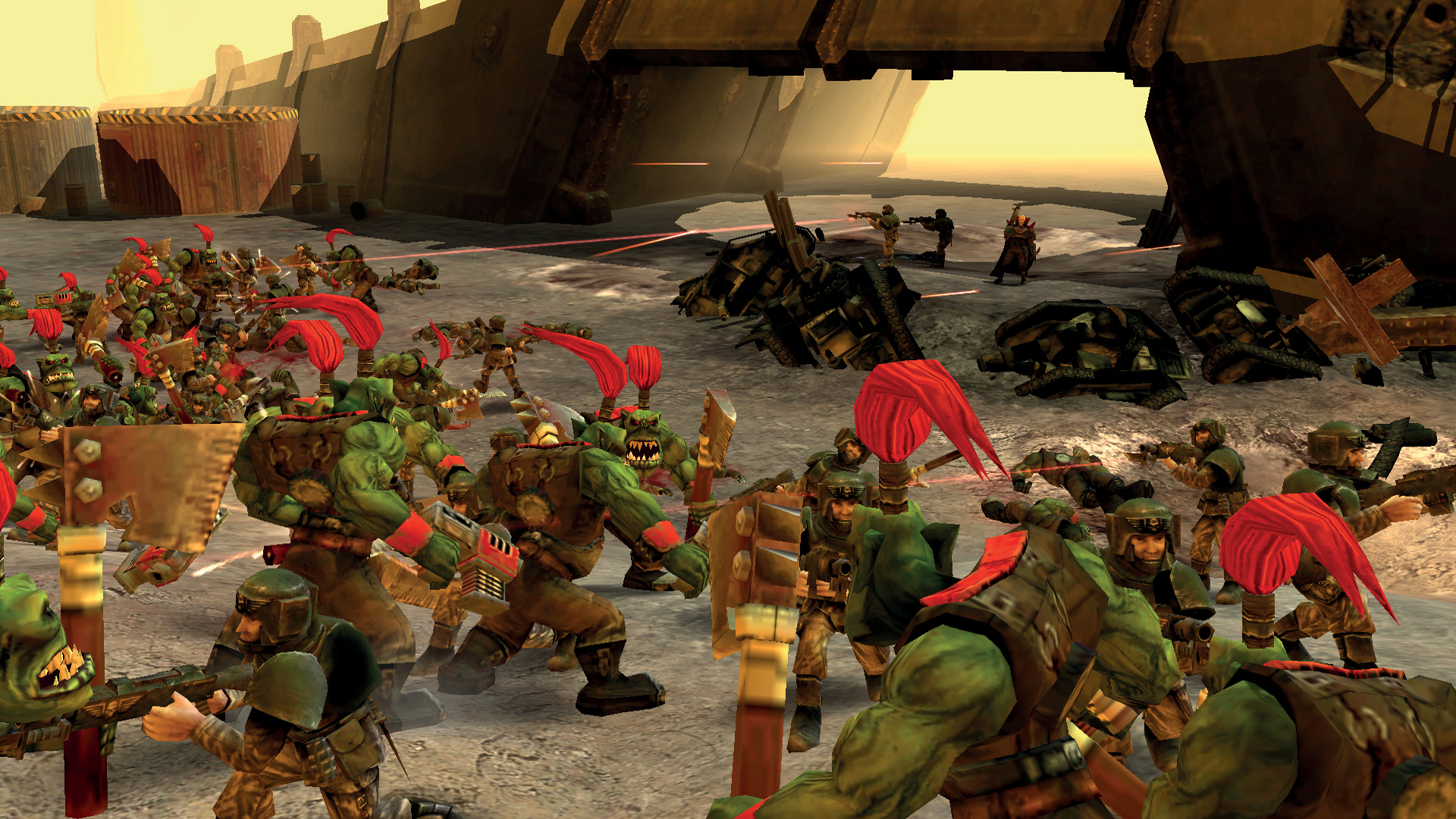
It’s a tragedy that Warcraft 3 got an HD remaster—albeit a half-assed one—but if I want to play Warhammer 40,000: Dawn of War I need to download widescreen hacks and an app just to remap the controls and get it into a playable state. Blizzard’s seminal RTS no doubt deserves all the praise it gets, but all these years later Dawn of War feels like the strategy game that really pushed the genre into new and interesting spaces. It’s not just the glorious, violent battles that erupt constantly across each mission, but the way Dawn of War cleverly trims the fat to create a strategy game that feels innovative and exciting even 16 years later.
I didn’t appreciate that the first time I played it, though. For most of my life, I had chugged Blizzard’s kool-aid and assumed Warhammer was a cheap knock-off for grown men who like gluing things together and spending £20 on tiny vials of paint with ridiculous names like Runelord Brass. But if you read last month’s Reinstall, you’ll know that James and I both recently decided to read some Warhammer 40k novels for the first time and instantly became converts. That naturally meant I had no choice but to consume all Warhammer media I could possibly find, and with Dawn of War and its expansions sitting in my Steam library, it was a natural place to start. I just wanted something to tickle my fancy for this new universe I suddenly developed an appetite for—but I didn’t expect this to rocket to the top of my favourite RTS games.
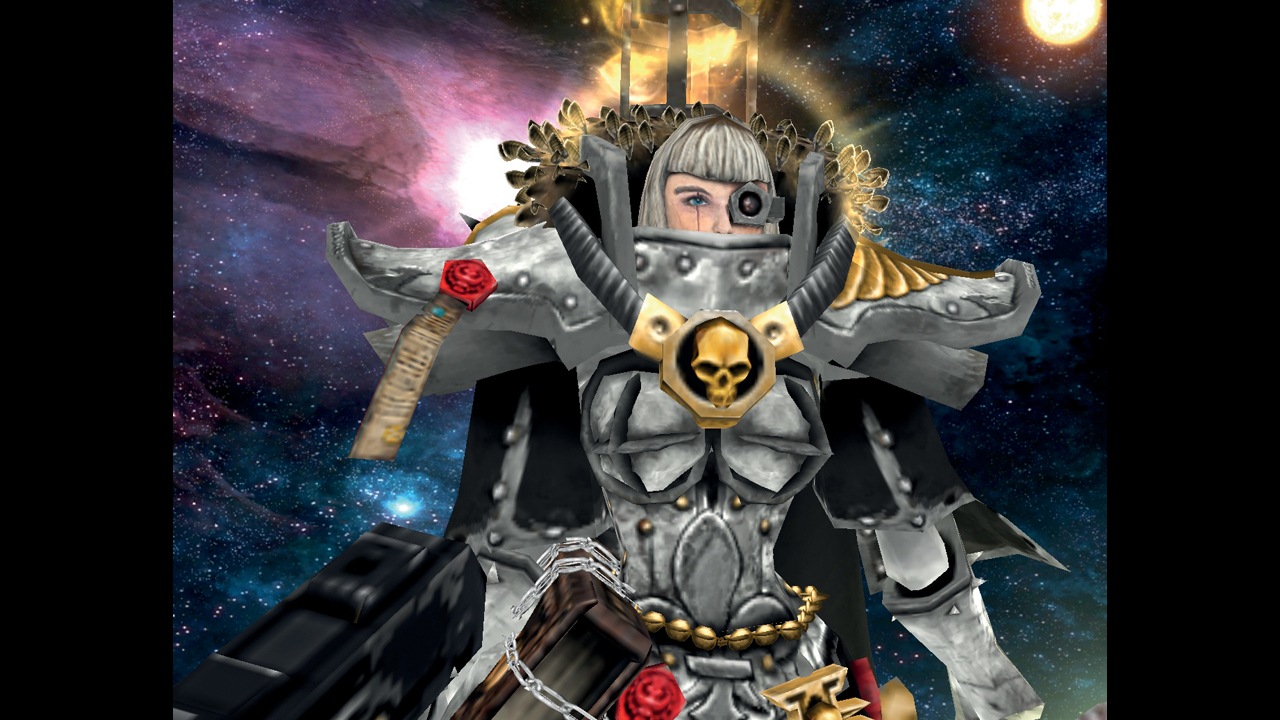
Rip and tear
First released back in 2004, Dawn of War follows a chapter of Space Marines called the Blood Ravens as they work to delay an Ork ‘WAAAGH!’ (40k parlance for ‘unstoppable invasion’) while the last human inhabitants of Tartarus regroup and flee the planet. Once Chaos Marines and Eldar start getting involved, though, the whole operation goes sideways as ancient demonic artefacts whisper betrayal and an impending warpstorm—basically an evil space hurricane—threatens to trap everyone on a planet overrun by Orks and demons.
That Dawn of War’s story manages to be this interesting decades later is a testament to how fun it is despite being so thoroughly incapable of nuance. Like many of the novels, its plot twists are seen coming miles away, but I don’t care because I’m too enchanted by the stoicism of the Blood Ravens captain, Gabriel Angelos, and his too-wise-for-his- own-good Librarian Isador. A lot of it is buoyed by the voice acting, though, which manages to somehow bring a bit of life to a group of super-soldiers who are only capable of feeling either righteous indignation or anger.
You don’t play Dawn of War for the story, though. You play it to gleefully watch a crab-like Chaos Marine Defiler wade into a group of Space Marines, pluck one up with its enormous mechanical claw, and toss his crumpled body half-way across the map. I feel like it’s moments like this that are missing from other RTS games of that era, especially Warcraft 3. There’s almost a kind of disregard for the spectacle of watching giant fantasy armies clash in battle. Units just hit each other with the same attack animations until one dies.
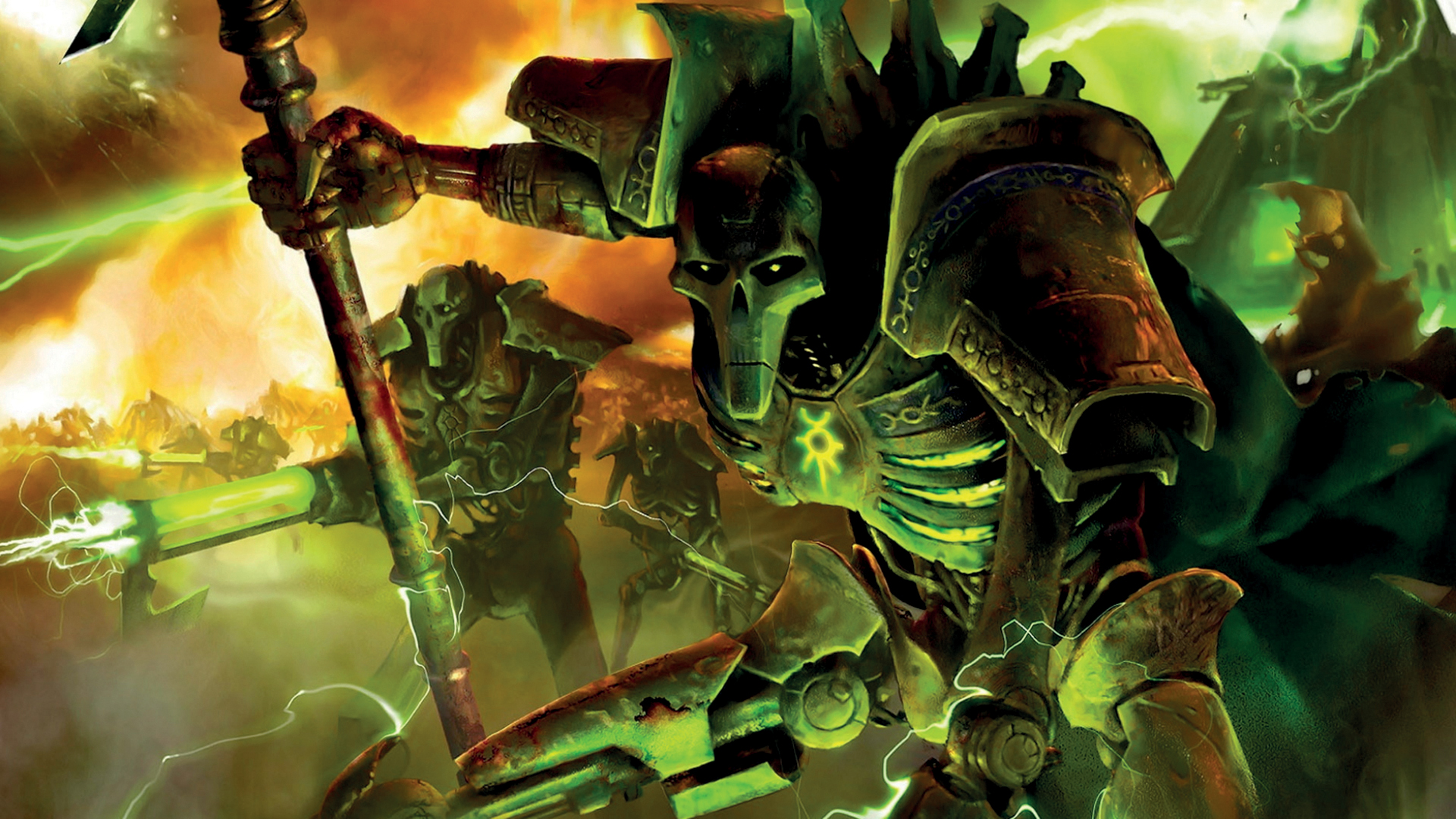
Dawn of War relishes in the violence. Every unit has bespoke ‘sync kills’ that trigger when they deal the killing blow against an enemy. When the Eldar summon the Avatar of Khaine in the seventh mission of the base campaign, much of the reason it’s so terrifying is not just because it takes half an army to kill. It’s terrifying because again and again it’ll impale Space Marines on its sword and hoist them upward so that gravity slowly pulls them further down onto the sword amid gouts of blood. Often I’m so caught up with zooming in and rotating the camera to watch the carnage that I forget to feed my units new orders. I just want to soak it all in.
It’s a system that only works because Dawn of War uses a unique squad system where individual units are actually composed of up to nine soldiers who act in unison. It’s such a great deviation from the standard RTS formula where a single soldier represents a single unit, not only because it adds some significant layers of strategy—like being able to purchase weapon upgrades for individual members of a unit or reinforce your damaged units with fresh recruits—but because it also adds a lot more meat to the grinder.
The biggest gaming news, reviews and hardware deals
Keep up to date with the most important stories and the best deals, as picked by the PC Gamer team.
That’s not the only innovation that makes Dawn of War still relevant today, however. It also disposes with the resource collection systems that I’ve come to despise in games like StarCraft only because it’s so fiddly. It’s not fun having to constantly micromanage whether or not my worker units are accessing the right resources back at base instead of pushing deeper into the map and watching fights break out.
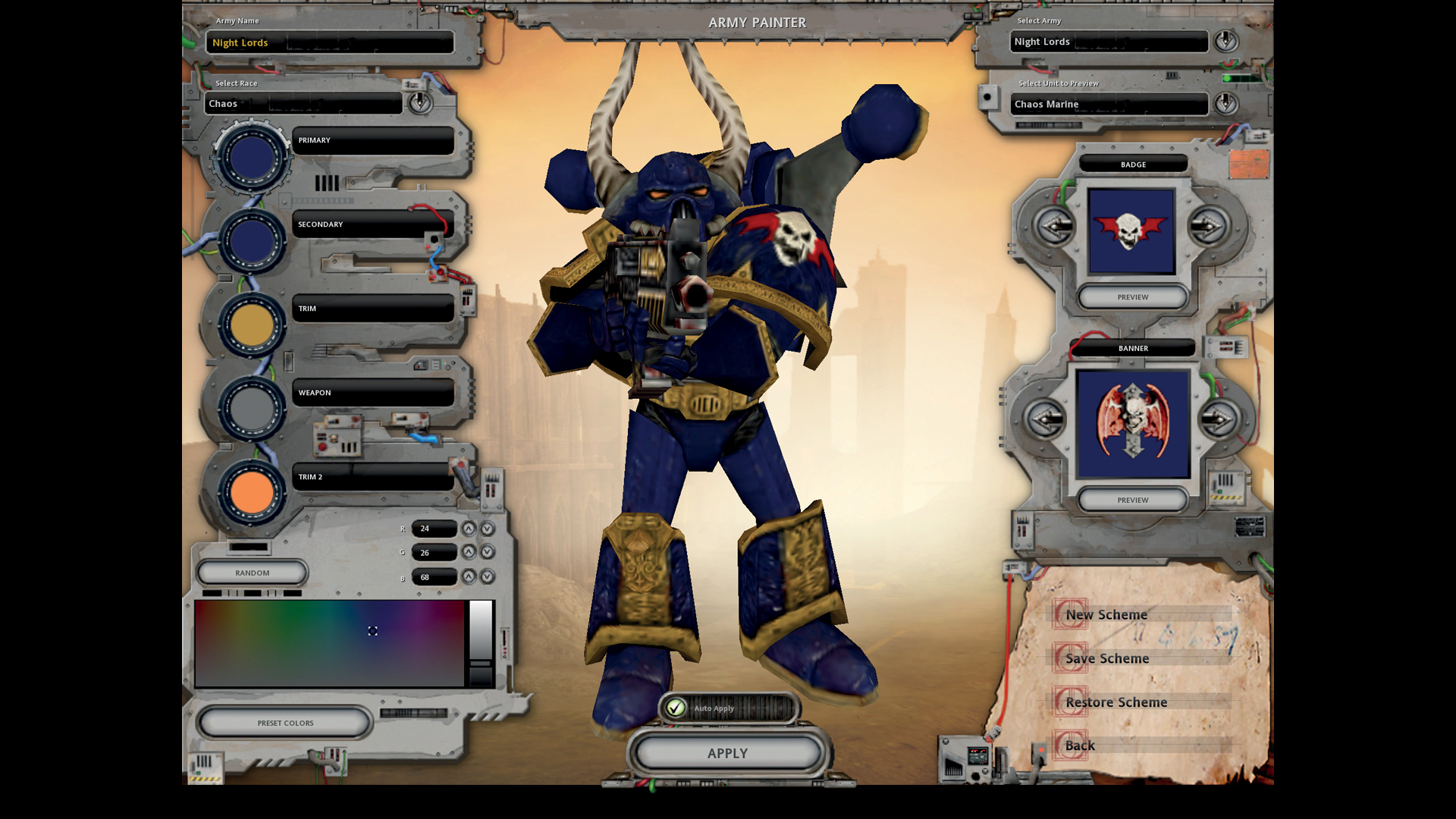
Taking control
Instead, resources are earned by spreading out and grabbing control points. Even by today’s standards, it’s such a genius evolution because it directly ties combat to your overall wealth and economy—especially in multiplayer where players are actively working to defeat one another. There’s no option to just turtle up inside your base and wait for players to come to you because you’ll also be starving yourself. You have to be aggressive.
Obviously that kind of playstyle makes perfect sense in the Warhammer universe. Hell, even the opening cinematic for Dawn of War shows an entire squad of Blood Ravens getting decimated by Orks while trying to take a control point seconds before an army of Space Marines arrives to save the day. They could’ve just hunkered down and waited, but that’s not the Space Marine way. That kind of wanton disregard for the individual sacrifice so long as it translates to increased control of the map infuses Dawn of War with a brutality you just don’t see in other similar RTS games.
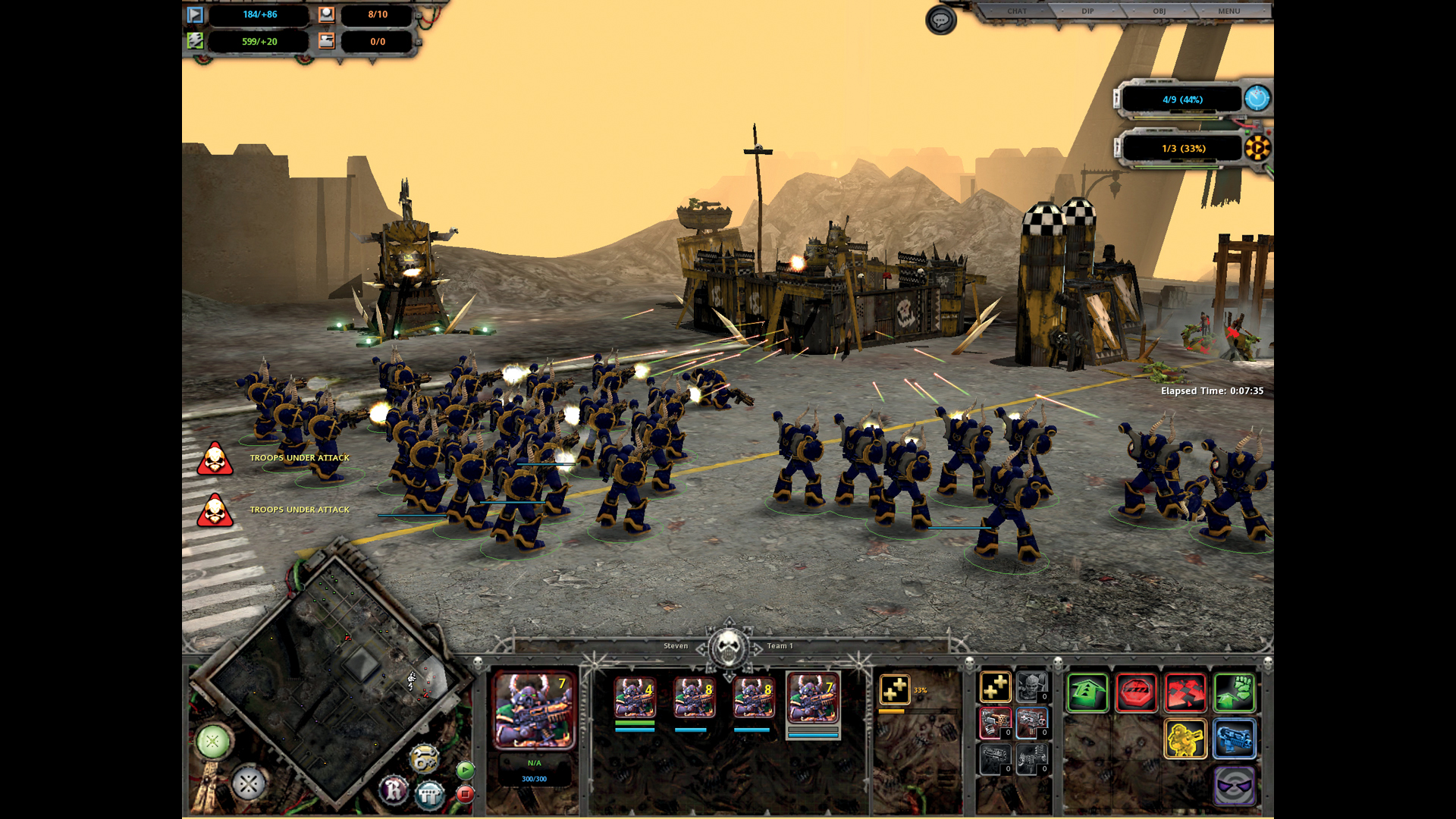
It’s just a shame that Relic hasn’t found a way to update the base game to run better on modern hardware. While the second expansion, Dark Crusade, introduces support for more wide aspect ratios, Dawn of War can only handle 1920x1440, which creates borders on the left and right of the screen and noticeably cuts down on how much you can see on the map. There’s a widescreen fix but it warps the size of the minimap so that it no longer fits within its borders, effectively cutting off pieces of it from your view.
I can deal with that, though, but it’s enormously frustrating that you can’t even bind certain keys. I didn’t even know that there was a pause button until a friend mentioned it, but it’s bound to the Pause key, which I don’t have on my smaller keyboard. My only option was to download a program called AutoHotKey, which can rebind keys at a system level.
It’s why I wish Dawn of War could get a remaster of its own. The ideas and systems holding this game together feel as subversive and exciting today as they probably did back in 2004. And even though the graphics aren’t great, it doesn’t take anything away from the thrill of Dawn of War’s bloody battles. It’s just a shame that a few technical issues can make returning to Tartarus a little annoying. Even so, it’s easy to look past those moments when you’re wrapped up in the intensity of a skirmish or playing through the surprisingly good story campaign.
With over 7 years of experience with in-depth feature reporting, Steven's mission is to chronicle the fascinating ways that games intersect our lives. Whether it's colossal in-game wars in an MMO, or long-haul truckers who turn to games to protect them from the loneliness of the open road, Steven tries to unearth PC gaming's greatest untold stories. His love of PC gaming started extremely early. Without money to spend, he spent an entire day watching the progress bar on a 25mb download of the Heroes of Might and Magic 2 demo that he then played for at least a hundred hours. It was a good demo.


